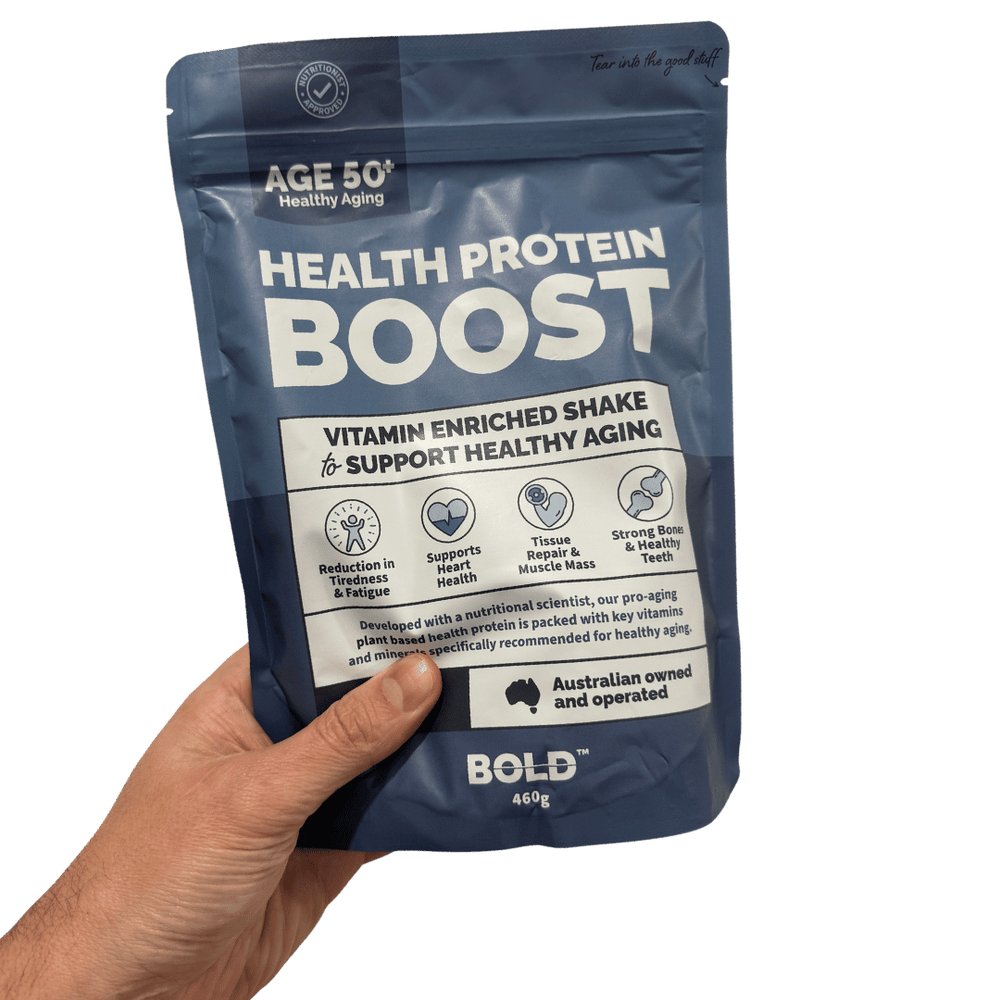What is Creatine? Your body's energy and vitality helper
Creatine is well-known in athletic circles, but its benefits extend far beyond elite sports.
Growing evidence shows that creatine supports everyday vitality and cognitive function, making it relevant for people of all ages, especially as part of healthy aging.[i]
The Science of Creatine
Creatine is a compound produced naturally in the body from three amino acids arginine, glycine, and methionine. Most creatine is stored in muscles, with a small portion also present in the brain. [ii]
You can imagine it as an energy reserve tank: When our regular energy source (ATP, adenosine triphosphate) runs low, creatine quickly refills the tank, ensuring a steady supply of power for both muscle contractions and mental activity.
During movement and thought, ATP acts as the body’s fuel.
However, ATP depletes rapidly during demand. Creatine, stored as phosphocreatine, donates a phosphate group to recycle ATP, much like tapping into a backup fuel reserve for an instant recharge.
Where Does Creatine Come From?
- Produced in the body: The liver and kidneys synthesize creatine from amino acids.
- Found in foods: Red meat and fish provide dietary creatine. Individuals with low meat intake, such as vegetarians or flexitarians, often have lower baseline levels and may benefit more from supplementation.
- Available as supplements: Creatine monohydrate is the most scientifically validated form. It is tasteless, dissolves easily, and is safe for most people when taken as directed.[iii]
Why take a Creatine supplement?
Natural aging leads to muscle loss and diminished strength—a process called sarcopenia. Lower energy levels and reduced cognition can also result.
The Australian Institute of Sport classifies creatine as a Group A supplement, denoting robust scientific evidence for its safe use in enhancing muscle strength, mental performance, and energy levels.
- Supports muscle strength, especially for higher intensity efforts, such as resistance training or bursts of energy in racquet sports like pickleball or tennis
- Improves cognitive processing
- Supports recovery in periods of loss of use of muscle from disuse, such as injury.[iv]
Safety and Recommendations
Creatine has an excellent safety profile for healthy adults, with a typical recommended dose of 3–5 grams daily. It is extensively researched and well-tolerated.[v] Those with kidney disease should consult their medical team before use.
Final Thoughts
Creatine is an effective energy reserve for both body and mind, helping maintain strength, mental sharpness, and stable energy as we age. It works quietly behind the scenes, like a dependable reserve tank, not just for athletes but for anyone seeking to support daily wellbeing.

[i] Hall, M., Manetta, E., & Tupper, K. (2021). Creatine Supplementation: An Update. Current sports medicine reports, 20(7), 338–344. https://doi.org/10.1249/JSR.0000000000000863
[ii] Kreider, R. B., & Stout, J. R. (2021). Creatine in Health and Disease. Nutrients, 13(2), 447. https://doi.org/10.3390/nu13020447
[iii] Kreider, R. B., Kalman, D. S., Antonio, J., Ziegenfuss, T. N., Wildman, R., Collins, R., Candow, D. G., Kleiner, S. M., Almada, A. L., & Lopez, H. L. (2017). International Society of Sports Nutrition position stand: safety and efficacy of creatine supplementation in exercise, sport, and medicine. Journal of the International Society of Sports Nutrition, 14, 18. https://doi.org/10.1186/s12970-017-0173-z
[iv] https://www.ausport.gov.au/ais/nutrition/supplements/group_a/performance-supplements2/creatine
[v] Antonio, J., Candow, D. G., Forbes, S. C., Gualano, B., Jagim, A. R., Kreider, R. B., Rawson, E. S., Smith-Ryan, A. E., VanDusseldorp, T. A., Willoughby, D. S., & Ziegenfuss, T. N. (2021). Common questions and misconceptions about creatine supplementation: what does the scientific evidence really show?. Journal of the International Society of Sports Nutrition, 18(1), 13. https://doi.org/10.1186/s12970-021-00412-w



